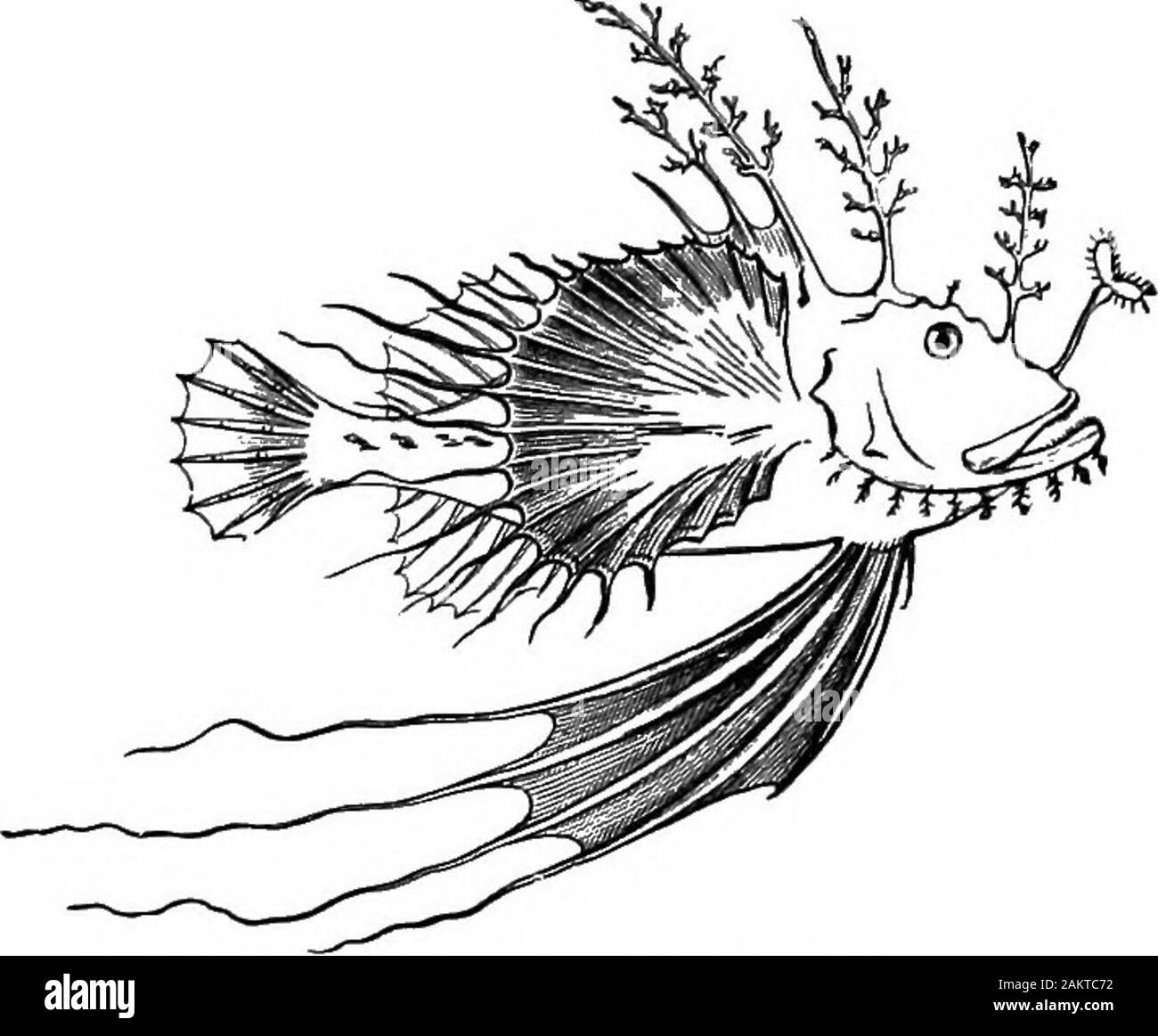First lesson in zoology : adapted for use in schools . the bottom; there is a greatvariation in the organs of digestion, in the shape of theswimming-bladder, when it is present, but especially in theshape and position of the fins. While no two kinds of fishswim in exactly the same manner, the power of swimminghas been wrought out most thoroughly in the bony fishes, invfhJch Nature has exhausted every refinement and variety 154 FIBBT LESSONS IN ZOOLOGY. of movement in the art of swimming. Tadpoles and frogs,turtles and alligators, ducks and loons, dogs and horses, can,after a fashion, get throu

Image details
Contributor:
The Reading Room / Alamy Stock PhotoImage ID:
2AKTC72File size:
7.1 MB (247 KB Compressed download)Releases:
Model - no | Property - noDo I need a release?Dimensions:
1739 x 1436 px | 29.4 x 24.3 cm | 11.6 x 9.6 inches | 150dpiMore information:
This image is a public domain image, which means either that copyright has expired in the image or the copyright holder has waived their copyright. Alamy charges you a fee for access to the high resolution copy of the image.
This image could have imperfections as it’s either historical or reportage.
First lesson in zoology : adapted for use in schools . the bottom; there is a greatvariation in the organs of digestion, in the shape of theswimming-bladder, when it is present, but especially in theshape and position of the fins. While no two kinds of fishswim in exactly the same manner, the power of swimminghas been wrought out most thoroughly in the bony fishes, invfhJch Nature has exhausted every refinement and variety 154 FIBBT LESSONS IN ZOOLOGY. of movement in the art of swimming. Tadpoles and frogs, turtles and alligators, ducks and loons, dogs and horses, can, after a fashion, get through the water; but how clumsy andgrotesque are the movements of the most elegant swimmersamong the vertebrates with legs compared with the move-ments of a fish in its natural element ! The student shouldwatch the movements of goldfish in a jar; or, better, oflarger fish in an aquarium. While in human life address, delicacy of perception, andtact are important elements of success in making ones wayin the world, the same holds good even with bony fish.. Fig. 159.—Young Angler-flsh. The cods under jaw has a long barbel, or organ of touch.In swimming over the bottom, or in grubbing in the mudand sand, it may with this be better able to detect the star-fish, snail, or crab partly hidden beneath it. Many fishes, especially bottom-feeders, as the pout, etc., as well asthe carps, especially the barbel, are provided with barbels.The angler-fish, which buries itself in the mud and sand, with its mouth partly open, has along the back a row ofslender tactile filaments, which stand up above the surface.Small fry swim along, touch the danger-signals thus hung9ut, stupidly disregard them, and the great jaws, like a cou- TEE BONT M8EE8. 165 eealed spring-trap, snap together, and the victims are en-gulfed by the dozen. But still more useful to the fish in finding their waythrough the water, and perhaps of use in avoiding theirenemies, is the row of touch-organs forming the lateralline (Pig. 139,